Test Bank for Principles and Practice of Psychiatric Nursing, 10th Edition: Gail Stuart
$38.00
Name: Principles and Practice of Psychiatric Nursing
Author: Gail Stuart
Edition: 10th
ISBN-10: 0323091148
ISBN-13: 9780323091145
- Description
- Reviews (0)
Description
You will receive this product immediate after placing the order
Chapter 20: Neurobiological Responses and Schizophrenia and Psychotic Disorders
Test Bank
MULTIPLE CHOICE
- A patient diagnosed with schizophrenia has difficulty completing tasks and seems forgetful and disinterested in activities. A nurse can best select successful strategies by understanding that these behaviors are due to:
| a. | a lack of self-esteem. |
| b. | manipulative tendencies. |
| c. | shyness and embarrassment. |
| d. | problems in cognitive functioning. |
ANS: D
The information processing of individuals with schizophrenia may be altered by brain deficits affecting memory and attention that then affect retention, ability to focus, and ability to make decisions.
DIF: Cognitive Level: Comprehension REF: Text Page: 348
TOP: Nursing Process: Assessment MSC: NCLEX: Psychosocial Integrity
- A patient diagnosed with schizophrenia is standing naked after showering and appears dazed and indecisive. The nursing intervention that will be most helpful to promote dressing would be:
| a. | saying, “These are your clothes. Please get dressed.” |
| b. | saying, “These are your underpants. I’ll help you put them on.” |
| c. | asking, “Which of these two outfits would you like to wear now?” |
| d. | asking, “Is something the matter with your clothes that makes you not want to dress?” |
ANS: B
When cognitive functioning is disrupted, a self-care deficit may be severe. The nurse may need to dress the patient. Each step of the process of dressing should be undertaken singly, and a simple explanation as to what is expected should be given.
DIF: Cognitive Level: Application REF: Text Page: 348
TOP: Nursing Process: Implementation MSC: NCLEX: Psychosocial Integrity
- During occupational therapy a patient diagnosed with schizophrenia sits staring at a piece of paper. Which response is most therapeutic at this time?
| a. | “If you prefer to sit and stare for a time, it is acceptable for you to leave.” |
| b. | “You seem immobilized by anxiety. Is there anything I can do to help?” |
| c. | “Are you having trouble deciding where you want to glue that piece?” |
| d. | “Rub the glue stick on the back of the paper.” |
ANS: D
Patients with disrupted cognitive functioning have difficulty focusing on an activity in a sustained, concentrated fashion. They may need direction. Because multistage commands are often not understood, simple directions should be given one step at a time.
DIF: Cognitive Level: Analysis REF: Text Pages: 348-349
TOP: Nursing Process: Implementation MSC: NCLEX: Psychosocial Integrity
- A patient diagnosed with schizophrenia reveals to the nurse that voices have warned of danger and adds, “They’re so loud they frighten me. Do you hear them?” The nurse’s best initial response would be:
| a. | “I know these voices are very real to you, but I don’t hear them.” |
| b. | “Don’t worry. You’re safe in the hospital. I won’t let anything happen to you.” |
| c. | “Tell me more about the voices. Are they men or women? How many are there?” |
| d. | “What do you do in order to keep yourself occupied so you don’t hear the voices?” |
ANS: A
When asked, the nurse should point out that he or she is not experiencing the same stimuli but should accept the reality of the hallucinations for the patient. Being able to communicate with the nurse at the time the hallucinations are occurring is helpful to the patient. Interactive discussion of hallucinations is a vital element in the development of reality-testing skills.
DIF: Cognitive Level: Application REF: Text Page: 366
TOP: Nursing Process: Implementation MSC: NCLEX: Psychosocial Integrity
- What part of the brain is dysfunctional in persons with schizophrenia? Research has implicated the:
| a. | medulla and cortex. |
| b. | cerebellum and cerebrum. |
| c. | hypothalamus and medulla. |
| d. | prefrontal and limbic cortices. |
ANS: D
The two most consistent neurobiological research findings in schizophrenia are imaging studies that show reduced brain volume and abnormal function, and neurochemical studies that show alterations of neurotransmitter systems affecting the prefrontal cortex and the limbic system.
DIF: Cognitive Level: Comprehension REF: Text Page: 355
TOP: Nursing Process: Assessment
MSC: NCLEX: Physiological Integrity: Physiological Adaptation
- A severely withdrawn patient diagnosed with schizophrenia will spend time in the dayroom but will not speak to staff or other patients. The most therapeutic nursing intervention in response to this behavior would be to:
| a. | seat the patient with a group of patients who are talking to each other. |
| b. | ignore the silence and talk about superficial topics such as the weather. |
| c. | point out that the patient makes others uncomfortable by refusing to speak. |
| d. | plan time for staff members to sit with the patient even though the patient does not talk with them. |
ANS: D
Developing trust is fundamental to developing a nurse-patient relationship. The nurse must demonstrate consistent and genuine caring. Initially schedule brief (5- to 10-minute), frequent contacts. Increase time gradually based on patient agreement.
DIF: Cognitive Level: Application REF: Text Page: 360
TOP: Nursing Process: Implementation MSC: NCLEX: Psychosocial Integrity
- A novice nurse asks the assigned mentor, “Why should I avoid telling the patient that his ideas are bizarre and simply not logical?” The mentor responds, “If you do that:
| a. | it will give the patient the basis for beginning to self-reflect on the delusions.” |
| b. | the patient will probably incorporate you into the delusions as a persecutor.” |
| c. | it will be difficult to use empathy and calmness to foster the patient’s trust.” |
| d. | you will have little chance of gaining the patient’s cooperation.” |
ANS: C
Developing trust is fundamental to working with a delusional patient. Much assessment data must be gathered before questioning the facts and their meaning and discussing the consequences of the delusion.
DIF: Cognitive Level: Application REF: Text Page: 367
TOP: Nursing Process: Planning MSC: NCLEX: Psychosocial Integrity
- A patient who has been hospitalized for 2 days remains anxious and continues to be preoccupied with paranoid delusions. What intervention will best help the patient focus less on the delusions?
| a. | Schedule time for the patient to read and listen to music. |
| b. | Plan activities that require physical skills and constructive use of time. |
| c. | Begin planning for discharge by engaging the patient in psychoeducation. |
| d. | Discuss personal goals related to improved socialization with the patient. |
ANS: B
Engaging the patient in physical activity will help distract the patient and keep the patient from focusing solely on the delusions. The patient would still be able to focus on the delusions while appearing to be reading or listening to music. The latter two activities are better addressed later in the course of treatment.
DIF: Cognitive Level: Analysis REF: Text Page: 367
TOP: Nursing Process: Implementation MSC: NCLEX: Psychosocial Integrity
- A most useful strategy for helping a patient with schizophrenia prevent a potential relapse is to:
| a. | have the patient attend group therapy. |
| b. | educate the patient on the need to take prescribed medication daily. |
| c. | teach the patient and family about behaviors that indicate impending relapse. |
| d. | schedule appointments for blood tests to determine serum medication levels. |
ANS: C
When the patient or family members are aware of the symptoms of an impending relapse, they can use symptom management strategies to prevent the relapse. While medication is a critical part of this condition’s management, relapse can occur even when the client is medication-compliant.
DIF: Cognitive Level: Application REF: Text Page: 371
TOP: Nursing Process: Implementation MSC: NCLEX: Psychosocial Integrity
- Which teaching point will have the most positive effect on patients diagnosed with schizophrenia and their families concerning the risk of relapses?
| a. | Patients who take their medications will not relapse. |
| b. | Caffeine and nicotine can reduce the effectiveness of antipsychotic drugs. |
| c. | With support, education, and adherence to treatment, patients will not relapse. |
| d. | Schizophrenia is a chronic disorder that is characterized by repeated relapses. |
ANS: B
Caffeine intake greater than 250 mg daily or smoking 10 to 20 cigarettes daily dramatically reduces the effectiveness of antipsychotic and antianxiety drugs and lithium. The need to limit the use of these substances is an important teaching point.
DIF: Cognitive Level: Analysis REF: Text Page: 374
TOP: Nursing Process: Planning
MSC: NCLEX: Physiological Integrity: Pharmacological and Parenteral Therapies
- An appropriate short-term goal for a withdrawn, isolated patient diagnosed with schizophrenia is, “The patient will:
| a. | participate in all therapeutic activities.” |
| b. | define major barriers to communication.” |
| c. | talk about feelings of withdrawal in group.” |
| d. | consistently interact with an assigned nurse.” |
ANS: D
Interacting with at least one person is desirable to reduce complete withdrawal and isolation. Such interaction provides the basis for formation of trust and the development of a nurse-patient relationship.
DIF: Cognitive Level: Application REF: Text Page: 362
TOP: Nursing Process: Planning MSC: NCLEX: Psychosocial Integrity
- The nursing diagnosis most likely to be applicable for a person who has schizophrenia, paranoid type, is:
| a. | social isolation related to impaired ability to trust. |
| b. | impaired mobility related to fear of losing control of hostile impulses. |
| c. | fear of being alone related to lack of confidence in significant others. |
| d. | impaired memory related to poor information processing associated with brain deficits. |
ANS: A
Individuals with paranoid schizophrenia are usually distrustful of others and socially withdrawn. They often have delusions of persecution and auditory hallucinations that further serve to isolate them from others.
DIF: Cognitive Level: Application REF: Text Pages: 360-361
TOP: Nursing Process: Diagnosis|Nursing Process: Analysis
MSC: NCLEX: Psychosocial Integrity
- The medical record of a patient diagnosed with schizophrenia states that the patient has cognitive dysfunction. From this statement, the nurse can expect to see evidence of:
| a. | anxiety, fear, and agitation. |
| b. | aggression, anger, hostility, or violence. |
| c. | blunted or flat affect or inappropriate affective responses. |
| d. | impaired memory and attention as well as formal thought disorder. |
ANS: D
Problems in cognitive functioning include impaired short-term and long-term memory, distractibility and poor concentration, loose associations, tangentiality, incoherence, illogical speech, concrete thinking, indecisiveness, impaired judgment, and delusions.
DIF: Cognitive Level: Comprehension REF: Text Page: 348
TOP: Nursing Process: Assessment MSC: NCLEX: Psychosocial Integrity
- A patient with schizophrenia repeatedly asks for directions and the time of day. The nurse should:
| a. | repeat the information in a kind, matter-of-fact manner. |
| b. | write out the information so the patient can easily refer to it. |
| c. | share that the habit of frequent questioning is annoying and should be avoided. |
| d. | initially provide the facts and then remind the patient that the question was already asked. |
ANS: A
The person with schizophrenia has brain malfunction resulting in poor memory and attention. The information should be repeated as often as necessary in a kind, matter-of-fact manner.
DIF: Cognitive Level: Application REF: Text Page: 348
TOP: Nursing Process: Implementation MSC: NCLEX: Psychosocial Integrity
- Which neurological deficits would the nurse be most likely to encounter when assessing a patient diagnosed with schizophrenia?
| a. | Weakness and loss of function |
| b. | Paralysis and diminished reflexes |
| c. | Droopy eyelids and reddened cornea |
| d. | Increased blinking and impaired fine motor skills |
ANS: D
Patients with schizophrenia are considered to have neurobiological problems. “Soft signs” are neurological deficits consistent with brain dysfunction of the frontal or parietal lobes. Soft signs include astereognosis, agraphesthesia, dysdiadochokinesia, impaired fine motor skills, increased eye blinking, abnormal smooth pursuit eye movements, and muscle twitches. By contrast, hard signs include loss of function, weakness, diminished reflexes, and paralysis.
DIF: Cognitive Level: Application REF: Text Page: 352
TOP: Nursing Process: Assessment MSC: NCLEX: Psychosocial Integrity
- A nurse observes a patient who is sitting alone in a room muttering, “You don’t know what you’re talking about! Leave me alone.” The nurse attempts to validate whether the patient is:
| a. | seeking the attention of staff. |
| b. | inappropriately expressing emotion. |
| c. | experiencing auditory hallucinations. |
| d. | displaying negative symptoms of schizophrenia. |
ANS: C
Impulsive activity, talking to people who are not present, and covering the ears are behaviors that may indicate the patient is responding to auditory hallucinations.
DIF: Cognitive Level: Application REF: Text Page: 351
TOP: Nursing Process: Assessment MSC: NCLEX: Psychosocial Integrity
- A patient displays positive symptoms of schizophrenia as evidenced by psychotic disorders of thinking. The nurse can expect the patient to evidence:
| a. | delusions and hallucinations. |
| b. | grimacing and mannerisms. |
| c. | echopraxia and echolalia. |
| d. | avolition and anhedonia. |
ANS: A
Positive symptoms of schizophrenia represent an excess or distortion of normal function. Delusions and hallucinations are considered psychotic disorders of thinking. The other symptoms listed are noted in schizophrenia, but they are not considered thought disorders.
DIF: Cognitive Level: Application REF: Text Page: 347
TOP: Nursing Process: Assessment MSC: NCLEX: Psychosocial Integrity
- A patient reports, “The government has implanted a device in my head.” What outcome would the nurse identify as being appropriate for the patient to achieve within 1 week of admission?
| a. | Taking antipsychotic medication as prescribed without objection |
| b. | Giving coherent data to support beliefs that a device has been implanted |
| c. | Interpreting reality correctly by stating that no implantation has occurred |
| d. | Reporting feeling less anxious about having the government listening to interior thoughts |
ANS: C
An appropriate outcome for a delusional patient is that the patient will interpret reality correctly.
DIF: Cognitive Level: Analysis REF: Text Pages: 361-362
TOP: Nursing Process: Outcome Identification
MSC: NCLEX: Psychosocial Integrity
- A patient reports, “My brain is controlled by government agents who can trace my whereabouts and listen to my thoughts.” An appropriate nursing response to this information would be:
| a. | “Your story is very strange and too bizarre for me to believe.” |
| b. | “Tell me why you think your brain is being controlled by the government.” |
| c. | “Were you experiencing any stress just before you began to think your brain was being controlled?” |
| d. | “Are you feeling frightened or angry about the government violating your body and controlling your brain?” |
ANS: C
It is appropriate for the nurse to help the patient place the delusion in a time frame and to identify triggers that may be related to stress or anxiety.
DIF: Cognitive Level: Application REF: Text Page: 367
TOP: Nursing Process: Implementation MSC: NCLEX: Psychosocial Integrity
- Which data gathered from the assessment of a family with a member diagnosed with schizophrenia would be of greatest importance in discharge planning for the patient?
| a. | The patient is the middle sibling. |
| b. | The patient’s mother is a talented artist. |
| c. | The patient’s paternal grandfather was eccentric. |
| d. | The patient becomes anxious when family members are critical of one another. |
ANS: D
The patient and family should be made aware of symptom triggers to which the patient is particularly reactive. Triggers may precipitate relapse. Teaching the family to modify this behavior is ideal, but if it is impossible, the patient can be taught to contact a mental health provider.
DIF: Cognitive Level: Analysis REF: Text Page: 359
TOP: Nursing Process: Assessment MSC: NCLEX: Psychosocial Integrity
- A patient is delusional and has auditory hallucinations. The best statement to make when approaching the patient with an oral electronic thermometer would be:
| a. | “I need your vital signs. Put this in your mouth. This will not hurt. ” |
| b. | “I hope I can count on you to hold still while I take your temperature.” |
| c. | “Please sit here while I put the thermometer under your tongue for a little while.” |
| d. | “This probe is only a thermometer that will tell us whether you have a fever. It will be all over in just a few seconds.” |
ANS: C
Psychotic patients often are preoccupied with internal stimuli and find it difficult to comprehend the words and actions of others. They may misinterpret both words and actions. To gain cooperation, use simple, explicit, concrete explanations and directions.
DIF: Cognitive Level: Application REF: Text Page: 349
TOP: Nursing Process: Implementation MSC: NCLEX: Psychosocial Integrity
- A patient admitted in a semistuporous catatonic state has neither left the apartment nor attended to personal hygiene for several weeks. The patient’s last 48 hours have been spent lying in bed, mute and motionless. The priority nursing diagnosis is:
| a. | self-care deficit. |
| b. | situational low self-esteem. |
| c. | disturbed thought processes. |
| d. | impaired verbal communication. |
ANS: A
The patient evidences self-care deficit in the areas of bathing/hygiene, dressing/grooming, feeding, and toileting. These deficits pose the greatest risk to the patient and are therefore the priority.
DIF: Cognitive Level: Analysis REF: Text Pages: 353-354
TOP: Nursing Process: Diagnosis|Nursing Process: Analysis
MSC: NCLEX: Psychosocial Integrity
- A patient tells the nurse, “I can’t go to any unit meetings because everyone can hear my thoughts.” The nurse can correctly assess this symptom as:
| a. | concrete thinking. |
| b. | loose associations. |
| c. | thought broadcasting. |
| d. | auditory hallucinations. |
ANS: C
Believing that others can hear one’s unexpressed thoughts is called thought broadcasting.
DIF: Cognitive Level: Comprehension REF: Text Page: 351
TOP: Nursing Process: Assessment MSC: NCLEX: Psychosocial Integrity
- A patient diagnosed with schizophrenia approaches the nurse and says, “I’m cold. Ice cream is cold. Freezers keep ice cream cold.” This speech pattern can be assessed as:
| a. | hyperverbosity. |
| b. | circumstantiality. |
| c. | loose associations. |
| d. | expressing delusions. |
ANS: C
Loose associations reflect a disturbance in thinking in which speech shifts from topic to topic in a random, seemingly unrelated manner. When severe, it results in incoherence.
DIF: Cognitive Level: Comprehension REF: Text Page: 349
TOP: Nursing Process: Assessment MSC: NCLEX: Psychosocial Integrity
- A patient diagnosed with schizophrenia was rehospitalized after a relapse. A priority intervention in designing a discharge plan to prevent relapses will be:
| a. | helping the patient’s family develop tolerance for the cognitive symptoms. |
| b. | mobilizing the family to provide structure to reduce social dysfunction. |
| c. | working on self-concept to reduce avolition, anhedonia, and dysphoria. |
| d. | early identification of signs of impending relapse and coping strategies. |
ANS: D
Early identification of signs of impending relapse provides time for intervention with symptom-management techniques and support systems. Symptom self-management promotes personal empowerment.
DIF: Cognitive Level: Application REF: Text Page: 362
TOP: Nursing Process: Planning MSC: NCLEX: Psychosocial Integrity
MULTIPLE RESPONSE
- The nurse is caring for a patient experiencing auditory hallucinations who says, “When I first heard the voices they said nice things about me but now they say bad things.” Which question will have an impact on the care this patient is initially provided? (Select all that apply.)
| a. | “Do you trust me to help you with the voices?” |
| b. | “Are the voices commanding you to hurt yourself?” |
| c. | “How often during 24 hours do you hear the voices?” |
| d. | “Do you hear the voices if you’re busy in a noisy environment?” |
| e. | “When did you first start hearing voices that were saying bad things?” |
ANS: B, C, D
The correct options are patient-focused and will help assure patient safety and appropriate nursing interventions. The other options do not constructively address client needs.
DIF: Cognitive Level: Analysis REF: Text Pages: 365-366
TOP: Nursing Process: Implementation MSC: NCLEX: Psychosocial Integrity
Be the first to review “Test Bank for Principles and Practice of Psychiatric Nursing, 10th Edition: Gail Stuart”
You must be logged in to post a review.

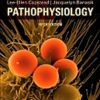
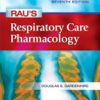

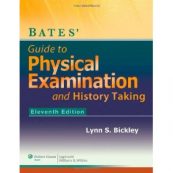

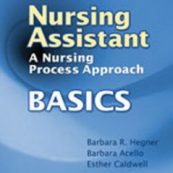
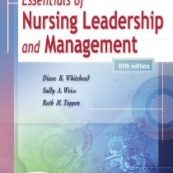
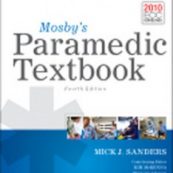
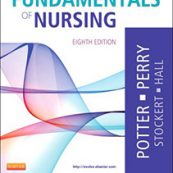
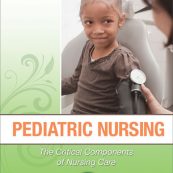
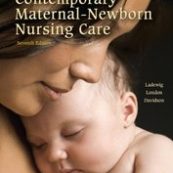
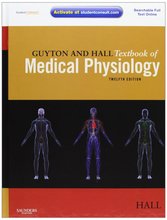
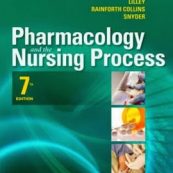
Reviews
There are no reviews yet.